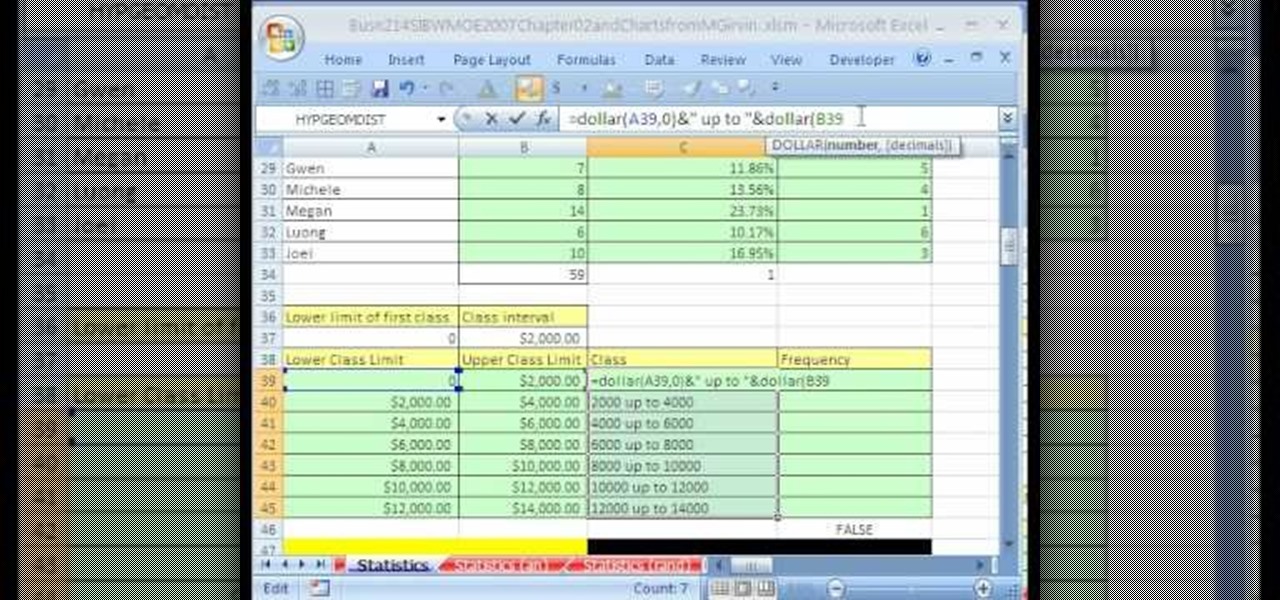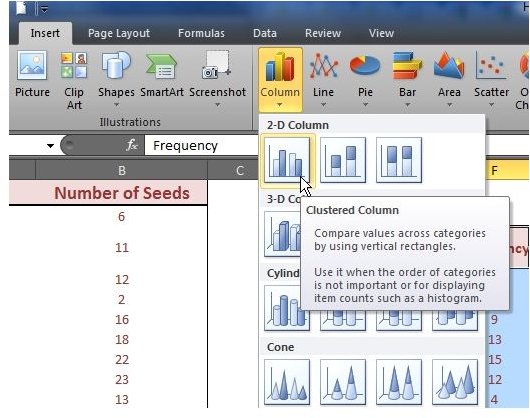

Note, you can drag and drop to different perspectives and may want to save multiple views for presentations, posterity. The results for about 75k data points of mine are below. Rgba = Īx.bar3d(xpos, ypos, zpos, dx, dy, dz, color=rgba, zsort='average') # scale each z to, and get their rgb values Max_height = np.max(dz) # get range of colorbars so we can normalize Xpos, ypos = np.meshgrid(xedges+xedges, yedges+yedges)Ĭmap = cm.get_cmap('jet') # Get desired colormap - you can change this! Hist, xedges, yedges = np.histogram2d(x, y, bins=(20,20)) #make histogram stuff - set bins - I choose 20x20 because I have a lot of data Note: Excel uses Scott's normal reference rule for calculating the number of bins and the bin width. On the Insert tab, in the Charts group, click the Histogram symbol. X = np.array(xAmplitudes) #turn x,y data into numpy arraysįig = plt.figure() #create a canvas, tell matplotlib it's 3dĪx = fig.add_subplot(111, projection='3d') If you have Excel 2016 or later, simply use the Histogram chart type. Adjust accordingly! xAmplitudes = #your data here Note: result will vary substantially depending on how much data you have and how many bins your choose for you histogram. If you had few data points in the bin where (x,y) = (100,100) it would be low and blue. So, for example, if you had many data point where (x,y) = (20,20) it would be high and red. The height represents the frequency of values in that bin.
#EXCEL 3D HISTOGRAM CODE#
This code generates a histogram scatterplot for any sort of x-y data.

I posted this in a related thread about colored 3d bar plots, but I think it's also relevant here as I couldn't find a complete answer for what I needed in either thread. H, xedges, yedges = np.histogram2d(x, y, bins = (10, 10))Īm I missing a step or a parameter? Any advice would be greatly appreciated. I have also tried the function from numpy without success A histogram is basically used to represent data provided in a form of some groups.It is accurate method for the graphical representation of numerical data distribution.It is a type of bar plot where X-axis represents the bin ranges while Y-axis gives information about frequency. I have tried the code with and without the "[" in the line Plotting Histogram in Python using Matplotlib. TypeError: can only concatenate list (not "float") to list M, bins = np.histogram(x, bins, weights=w, **hist_kwargs)įile "C:\Python27\lib\site-packages\numpy\lib\function_base.py", line 169, in histogram However, I am getting the following error Traceback (most recent call last):įile "C:/Users/ckiser/Desktop/Projects/Tom/Python Files/threedhistogram.py", line 24, in a3dhistogramįile "C:\Python27\lib\site-packages\matplotlib\axes.py", line 7668, in hist I have attempted to create a 3d histogram using the X and Y arrays in the following code import matplotlibįrom mpl_3d import Axes3DĪx.hist(, bins=10, range=, ])
#EXCEL 3D HISTOGRAM HOW TO#
This is more of a general question about 3d histogram creation in python. How to create a histogram chart in Excel that shows frequency generated from two types of data (data to analyze and data that represents intervals to measure frequency).


 0 kommentar(er)
0 kommentar(er)
